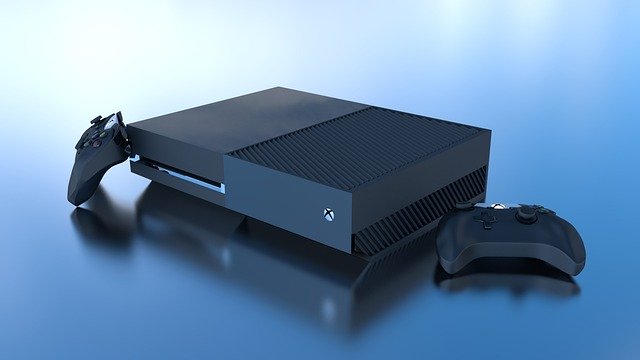
Electromagnetic radiation or EMF is quickly becoming a menace that we collectively must recognize and act on. The scientific magazine Journal of Molecular Biology predicts that radiation will become the number one reason for the contraction of chronic conditions by the year 2050.
However, if you took a poll right now, not many people would be aware of the significant dangers it poses. The reason for this can be largely attributed to the lack of coverage by the mainstream media.
If you’ve been a follower of this blog, you’d know just how passionate I am about radiation and its dangers. It can cause severe health issues and can even bring about chronic conditions such as diabetes and cancer.
So, is there nothing we can do? All hope is not lost. We have actually come up with several anti-radiation products (also called radiation shields) that can save us from the harmful effects it.
In this article, we will discuss in detail what an EMF shield is, how it protects us, and the most common EMF shielding products that are available today.
Before we get into it here are my favorite EMF protection products
- DefenderShield EMF Radiation Protection Blanket – Ultimate protection from wireless radiation. The only EMF radiation protection blanket with multiple layers of shielding to block up to 100% of wireless (RF) radiation from cell phones, tablets, laptops, WiFi routers, and other electronic devices, and ambient emissions in the environment. Available here.
- DefenderPad Laptop EMF Radiation Protection & Heat Shield. The DefenderPad is the ONLY laptop pad that uses multiple layers of shielding to block up to 100% of laptop EMF radiation (RF & ELF) while also greatly reducing heat! Get the latest price here.
- DefenderShield Universal EMF Radiation Protection Pouch for Smartphones – EMF shielding to block up to 100% of wireless (RF) radiation. Most pouches only block a percentage of radiation emitted from your cell phone. Shielding is within the backside of the pouch to block signals and EMF emissions going towards the body, yet does not interfere with phone connectivity. Available here.
- Copper Fabric Blocking RFID/RF-Reduce EMF/EMI Protection Conductive Fabric for Smart Meters – Very easy to cut and sew. Usage for Bags, Curtains, Tents, etc. Effective Shielding for CellTowers, Microwave Signals, Phones, and Smart Meters. Find it here.
- TriField EMF Meter Model TF2. is an AC gaussmeter, AC electric field meter, and radio power density meter in a single unit, that combines all the features needed for fast, accurate measurements of electromagnetic fields (EMF). Best price on Amazon here.
What is an EMF Radiation shield?
As the name suggests, an EMF shield is a device that shields us from harmful EMF radiations.
Depending on the type of EMF shield, the methods of radiation deflection and amplitude of deflection varies. What that means is, the quality of the radiation shield determines how it goes about blocking the radiation and just how much radiation it can block.
All EMF shields typically use the same principles for blocking harmful radiations. It is based on a theory proposed and later experimentally confirmed by British scientist Michael Faraday known as Faraday cages.
We will discuss the theory in detail and how it is used to block EMF in detail in the following paragraphs.
The Theory of Faraday Cages
British physicist Michael Faraday proposed the idea of Faraday cages in 1836.
He had deduced from his observations that when any electric conductor becomes charged, all the extra charge sits on the outside of the conductor, giving impetus to the idea of Faraday Cages.
In simple terms, Faraday suggested that if a charged particle were to be beamed at an object that was caged inside of a metal (or any conductor) frame, the charge would be absorbed by the metal and will never reach the object it was originally beamed at.
He later confirmed the hypothesis with a working experiment which became the bedrock of today’s EMF protection innovation.
How are Faraday cages implemented in EMF shields?
The Faraday cage seems to be an elaborate experiment when you first read about it. Then naturally the question arises, how do we implement in our day to day EMF shielding protection products?
Some products make sense but there are even anti-radiation shirts available – there’s no way we can viably build a cage around a shirt and wear it around town, right?
This is where scientific innovation comes in. We do actually build an elaborate cage around the shirt to contain the radiation, but not in the way that you think.
On the inside surface of the shirt, a metal wire (usually of highly conductive silver) is used to sew in a cage that acts like the Faraday cage and absorbs the EMF radiation coming your way.
That way, the cage is built in the most discreet of ways, yet providing you with maximum security from harmful radiations. This is the same method used in almost all EMF shields irrespective of their physical shape and make.
But does this actually work?
Physics is universally true, meaning what works in the macro will also work in the micro. These Faraday cages made from strings of conductive metal wires really do work in containing radiation.
And this same principle is applied across the board whether you’re buying an anti-radiation shirt or curtains or bedsheets.
Even more solid shields like phone covers and laptop cover too operate on the same principle, albeit with different approaches in incorporating the cage within their physical structures.
What radiation shields can I buy?
Radiation shields come in various shapes and forms depending on your need. There are plenty of options out there so chances are that for the particular use you’re thinking about, there are multiple products that offer superlative protection.
Anti-radiation products vary from t-shirts to bedsheets to curtains to even paint so the range is truly quite wide.
If you’re just getting into anti-radiation products and want a product that you can use effectively and repeatedly without much hassle, I’d suggest you go with an anti-radiation blanket.
The reason I suggest it is simple – they are long which allows you to manipulate them in any way you want to block radiation. For example, you can use it to wrap around yourself when sleeping in a room that has a router in it but you can also use it to cover your laptop which will stop radiation from the machine to reach your body.
It’s multipurpose and does well to offer protection. I have a great article dedicated to anti-radiation blankets for you to peruse if you’re interested.
That aside, an anti-radiation shirt can also be a good option. This is especially true if you sit on your computer all day and don’t want the harmful rays to wreak havoc on your health.
Just put on the shirt and you’re good to go. You can also look at getting more specialized products if you are interested in containing radiation from a specific source. For example, a phone cover to minimize radiation frequency exposure is a great investment to make.
This is because RF frequencies are really bad for our health and can thermally damage cells and tissues if exposed for too long. Similarly, you can opt for a laptop cover that protects you from the harmful radiation emitted by your laptop.
There are plenty of options available for you to choose from. The best way to go about it is to define your use case and they go about finding solutions that actually address your problem.
Things to remember before buying a radiation shield
If you did a quick search on Google on radiation shielding products, you get more than 10 million results. So does that mean you can simply buy anyone from the 10 million offerings?
Absolutely not. The thing is, radiation as a niche is still pretty new and thus the marketplace for products in the niche is not as tightly regulated or scrutinized for quality.
As more and more people are gaining awareness of radiation and its potential harms, people are increasingly searching for products that can help them stay protected. This has lured a lot of unethical brands to pop up and offer subpar products.
Since there is no quality control standard established, they can get away with it easily while scamming innocent worried people hundreds (and sometimes even thousands) of dollars in the process.
This is truly tragic but there is a little to be done here other than for you to be cautious of the product you’re choosing to invest in and doing your due diligence in researching the basis of the product.
Thankfully, there are a handful of really awesome brands that’ve made a name for themselves in this field thanks to their superlative workmanship and integrity.
Their products are backed by actual scientific research (that’s often referenced on their websites) and they offer lucrative 30-day warranties for the products they sell in case you get a defective one. Putting your trust in them and investing in their manufactured products thus seem to be a more sensible thing to do rather than taking a gamble at an unknown brand.
If you’re interested to know in-depth about this or are curious about these trusted brands, I have a detailed article where I review my top anti-radiation product brands and the best qualities about them. You can check that out if you like.
I’ve also compiled an extensive list of anti-radiation products that I regularly use and recommend that you can peruse in case you need a starting point.
What’s the guarantee that my radiation shield will work?
There are no guarantees really but if you were to buy from an established brand, chances are that they have some kind of 30 day warranty on the product which allows you to exchange it for a new one or claim your money back.
If you are unsure about whether the new radiation shield you’ve ordered is working on not, you can do an easy static test with an EMF meter. To conduct this, simply take your meter and get a reading of your room. Then, bring your cellphone into the room and take a reading.
Once done, cover the cellphone up with your newly purchased radiation shield and take a reading. The closer it is to the first reading you took of the room without your cellphone present, the better the radiation blocking ability. Always make sure you run a test when you buy a new anti-radiation product.


